Recombinant Human AKT3 protein(Met1-Glu479), GST-tagged
| Cat.No. : | AKT3-131H |
| Product Overview : | Recombinant Human PKBG (NP_005456.1) (Met 1-Glu 479) was expressed in Insect Cells with the GST tag at the N-terminus. |
| Availability | April 17, 2025 |
| Unit | |
| Price | |
| Qty |
- Specification
- Gene Information
- Related Products
- Case Study
- Application
- Download
| Species : | Human |
| Source : | Insect Cells |
| Tag : | GST |
| Protein Length : | 1-479 a.a. |
| Form : | Lyophilized from sterile PBS, pH 7.4. Normally 5 % - 8 % trehalose, mannitol and 0.01% Tween80 are added as protectants before lyophilization. |
| Molecular Mass : | The recombinant human PKBG/GST chimera consists of 704 amino acids and predicts a molecular mass of 81 kDa which is also estimated by SDS-PAGE. |
| Endotoxin : | < 1.0 EU per μg of the protein as determined by the LAL method |
| Purity : | > 90 % as determined by SDS-PAGE |
| Storage : | Samples are stable for up to twelve months from date of receipt at -20°C to -80°C. Store it under sterile conditions at -20°C to -80°C. It is recommended that the protein be aliquoted for optimal storage. Avoid repeated freeze-thaw cycles. |
| Reconstitution : | It is recommended that sterile water be added to the vial to prepare a stock solution of 0.2 ug/ul. Centrifuge the vial at 4°C before opening to recover the entire contents. |
| Full Length : | Full L. |
| Gene Name | AKT3 v-akt murine thymoma viral oncogene homolog 3 (protein kinase B, gamma) [ Homo sapiens ] |
| Official Symbol | AKT3 |
| Synonyms | AKT3; v-akt murine thymoma viral oncogene homolog 3 (protein kinase B, gamma); RAC-gamma serine/threonine-protein kinase; PKBG; PRKBG; RAC gamma; PKB gamma; RAC-gamma serine/threonine protein kinase; STK-2; PKB-GAMMA; RAC-gamma; RAC-PK-gamma; DKFZp434N0250; |
| Gene ID | 10000 |
| mRNA Refseq | NM_001206729 |
| Protein Refseq | NP_001193658 |
| MIM | 611223 |
| UniProt ID | Q9Y243 |
| ◆ Recombinant Proteins | ||
| AKT3-0362H | Recombinant Human AKT3 Protein (Met1-Lys143), N-His-tagged | +Inquiry |
| AKT3-0084H | Recombinant Human AKT3 Protein (S2-E479), Tag Free | +Inquiry |
| AKT3-427H | Recombinant Human AKT3 Protein, GST-tagged | +Inquiry |
| Akt3-159H | Recombinant Human Akt3, His-tagged | +Inquiry |
| AKT3-298R | Recombinant Rhesus monkey AKT3 Protein, His-tagged | +Inquiry |
| ◆ Cell & Tissue Lysates | ||
| AKT3-728HCL | Recombinant Human AKT3 cell lysate | +Inquiry |
| AKT3-001MCL | Recombinant Mouse AKT3 cell lysate | +Inquiry |
Case 1: Long MJ, et al. Nat Chem Biol. 2017
The way certain isozymes are controlled after they're made can really tweak how signals in the body work, but because of similarities between some of these enzymes, it's tough to pin down exactly what each one does. Researchers haven't quite cracked the code yet on how to study this properly. In an interesting study, scientists used a special screen to show that Akt3 is quick to react to certain natural lipids in the body. When these lipids modify Akt3, it changes how signals move in cells and in zebrafish, and this reaction is quite different from how another isozyme, Akt2, responds. They found out that a specific part of Akt3, the C119 cysteine, is key in sensing a lipid called 4-hydroxynonenal. When they tweaked this part of Akt3, the enzyme couldn't do its usual job like the unmodified version. This research highlights how specific changes in isozymes can lead to unique responses in the body.
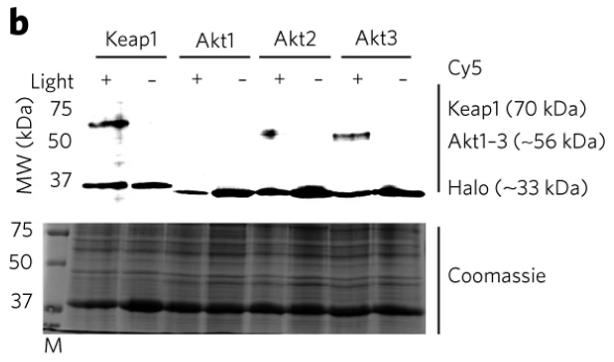
Fig1. T-REX screen and validation identified Akt3 to be a first HNE-responder.
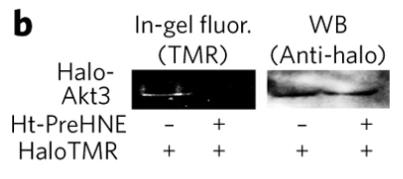
Fig2. Fish injected with Halo-Akt3 mRNA express the full-length fusion protein.
Case 2: Herrera JL, et al. Cell Rep. 2024
When it comes to keeping our blood vessels in check, communication between neighboring endothelial cells is key. Researchers found that calm, or quiescent, endothelial cells use a protein called Jagged1 to 'tell' their neighbors to chill out too, helping to secure the barrier of these cells. This process is driven by something called R-Ras activating Akt3, leading to more production of Jagged1 and other important genes like UNC5B. This also ramps up VE-cadherin in the nearby cells, which sticks them together more firmly. All these interactions stabilize the cells and make sure they keep their lines of communication open, providing a feedback loop that maintains the calm necessary for the blood vessel lining's stability.
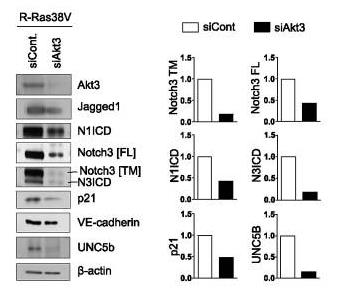
Fig1. The Akt3 isoform was silenced in R-Ras38V-transduced ECs, and Notch1 and Notch3 activation.
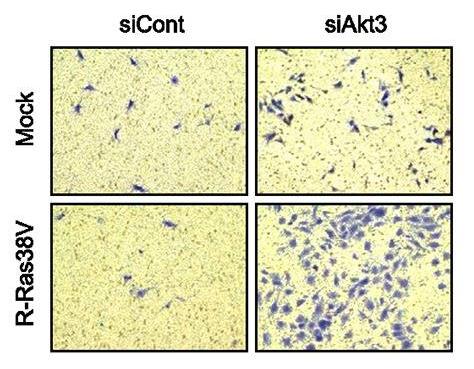
Fig2. Akt3 was silenced in mock- or R-Ras38V-transduced ECs, and the migration of these cells was analyzed.
AKT3 is one of those proteins in our body that's super important for things like helping cells grow, multiply, and survive. It's especially crucial for how our brain and nervous system develop. Plus, researchers have noticed that it has a link with some types of cancer. So, by digging into how AKT3 works, scientists hope to unravel more about certain diseases and maybe even come up with new treatments.
When it comes to the lab and industry, recombinant human AKT3 protein is really handy. In research, scientists use it to get a better grasp on the signaling pathways it affects and to see how it influences various cell behaviors. On the industrial side, it's known to help boost cell growth, making it a useful tool in things like yeast and cell cultures to improve productivity. There's also a big interest in using AKT3 to develop cancer drugs, as understanding how it acts in tumor cells could lead to more precise treatment strategies.
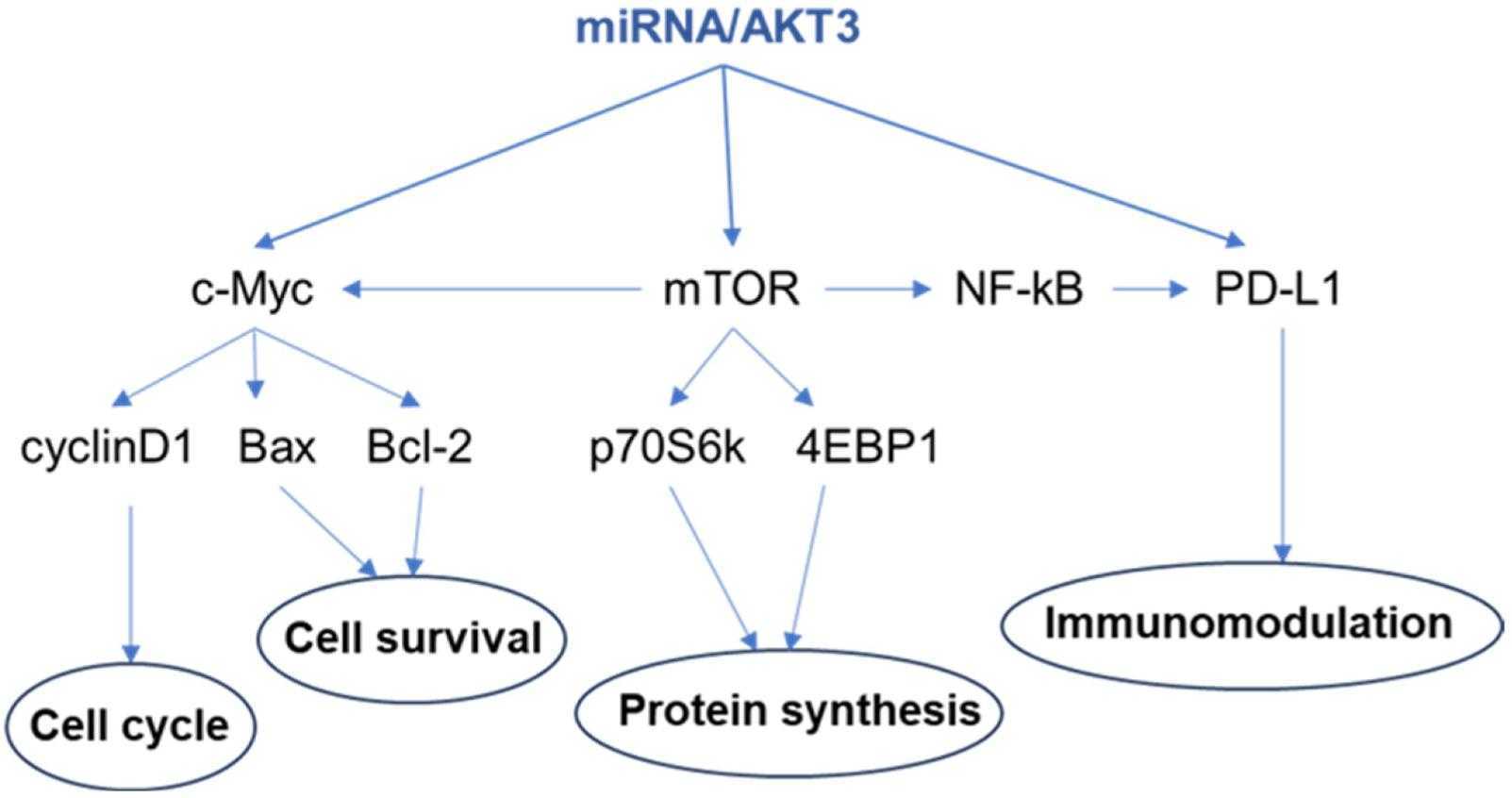
Fig1. Identified signaling molecules involved in the miRNA/AKT3 axis in human cancers. (Chun Yang, 2023)
Not For Human Consumption!
Inquiry
- Reviews
- Q&As
Ask a Question for All AKT3 Products
Required fields are marked with *
My Review for All AKT3 Products
Required fields are marked with *
Inquiry Basket


